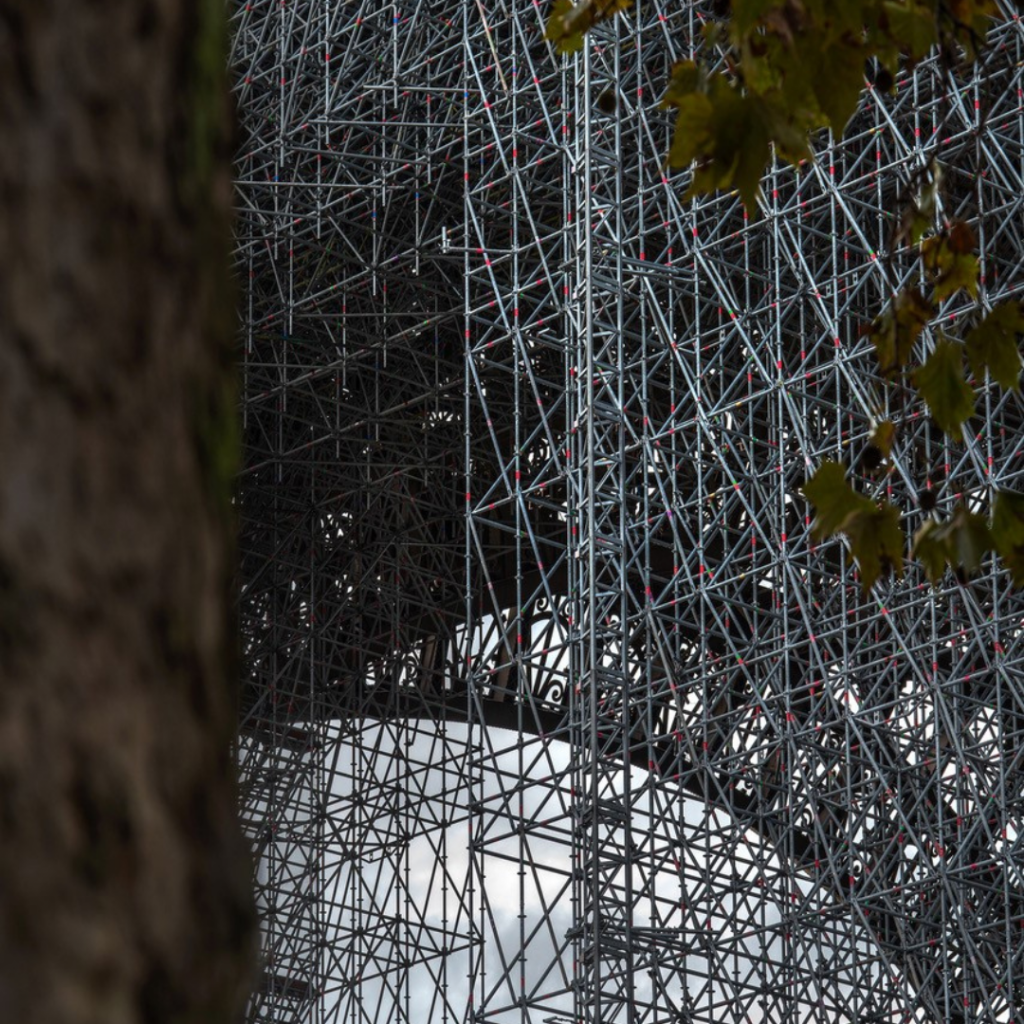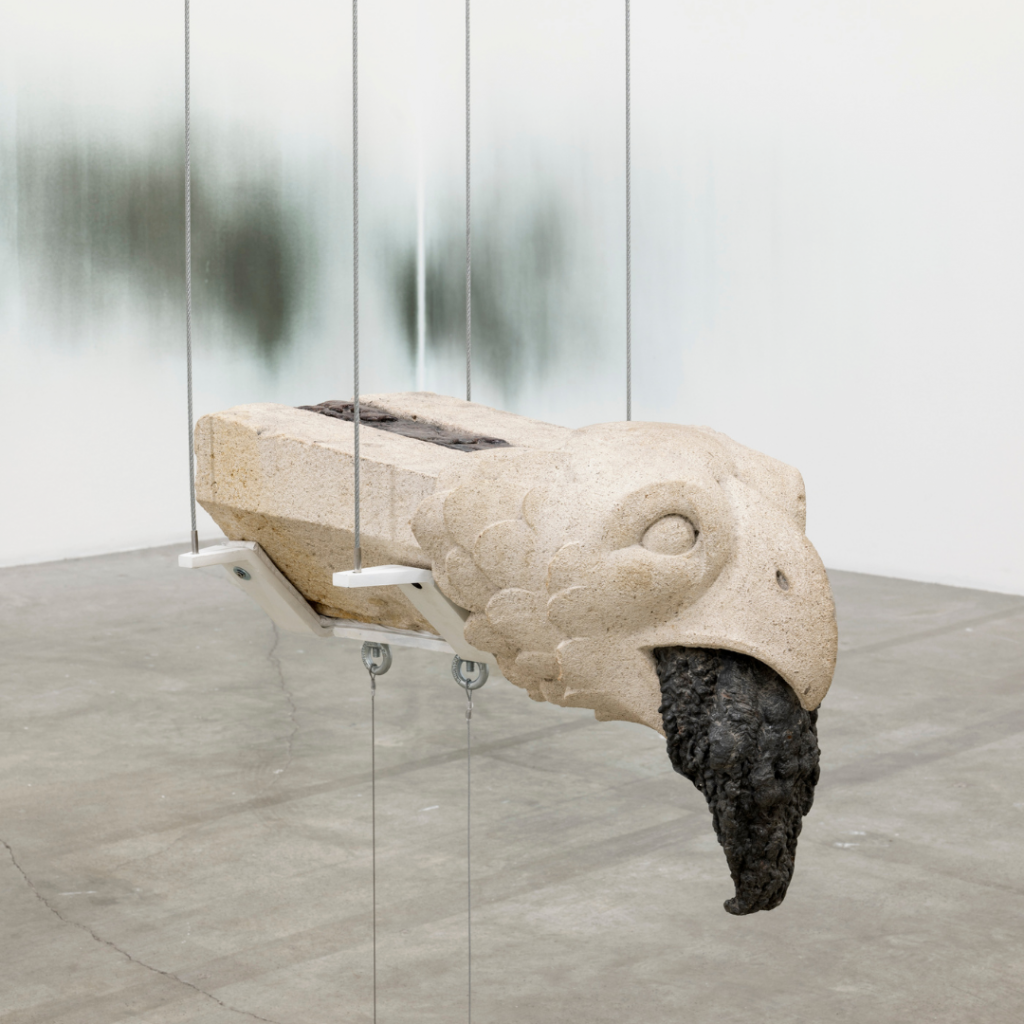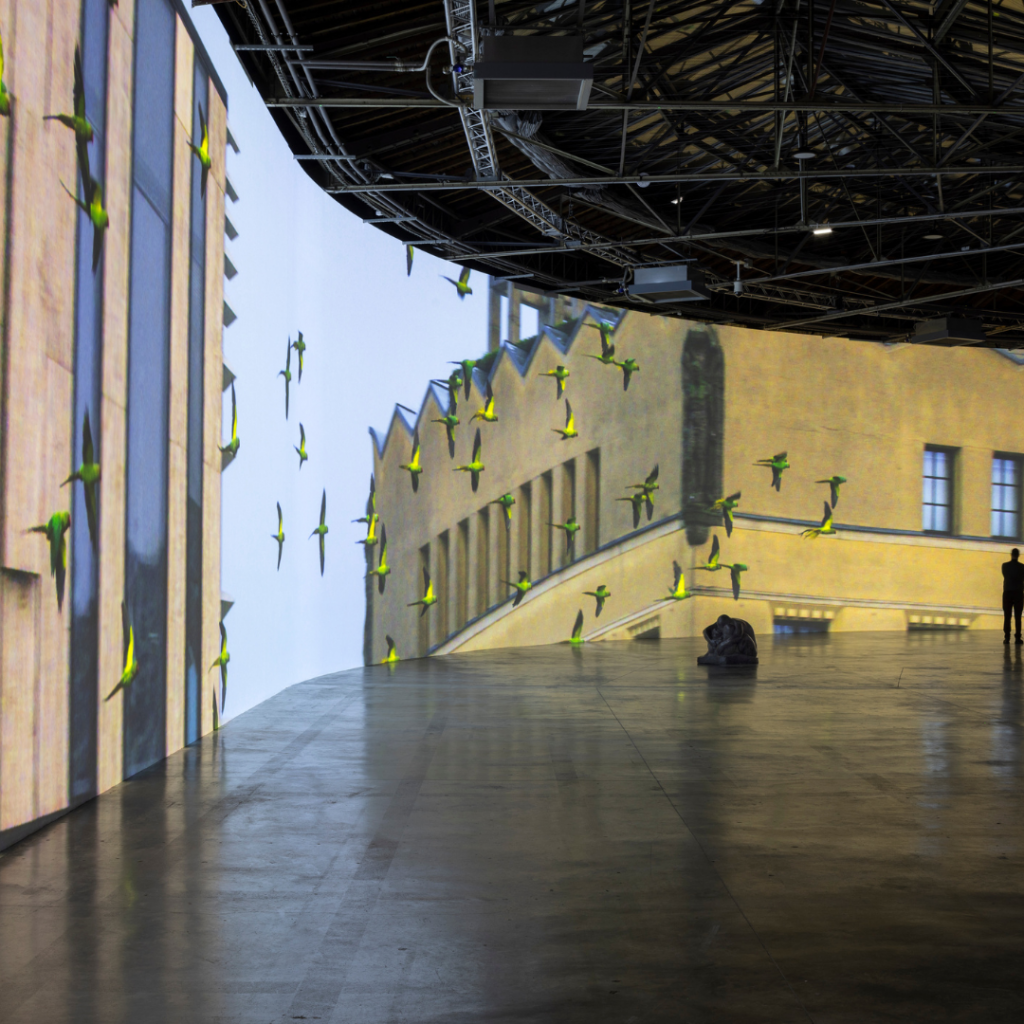While bringing the Defender of Time back to life (at Lafayette Anticipations), Cyprien Gaillard gives us a glimpse of the ruins and disorders of our time (at the Palais de Tokyo). An initiatory exhibition in two parts that says a lot about our breaks and cracks and our dreams of reconstruction and regeneration.

Once upon a time, there was a child who stopped his run under a clock to watch the Defender of Time – a monumental automaton perched on a brass rock, fighting with sword and shield the assaults of a crab, a dragon, and a rooster… Made by Jacques Monestier, this mobile wall sculpture, installed in 1979 in the Horloge district of Paris, near the Pompidou Center, stopped, due to lack of maintenance, in 2003… Gone are the three strokes of the bronze drum announcing the intermittent fight each hour (the man being attacked by one of the three allegorical animals chosen by a “random programmer”). Gone is the merry-go-round of time suspended from the sword of the golden knight. No more moments of reverie and fascination stolen from time.

It is to this broken dream that Cyprien Gaillard gives life again today, after seeing his paralyzed knight abandoned to the four winds and his golden brass skin tarnished and eroded while it was soiled by a colony of pigeons… “I always wanted to breathe new life into someone else’s work,” explains the artist, who succeeded in having the work, abandoned to its sad fate, deposited for restoration. Currently hanging in the heart of the high-tech tower of the Lafayette Anticipations Foundation (the project’s sponsor),1 before being returned to its original location at the end of its exhibition, it appears in its original splendor (combining hammered brass with gold leaf and oxidized brass, the sculpture is a masterpiece of goldsmithing), but also bears the scars of time: it is thus soiled with pigeon droppings and dust that The Defender of Time has valiantly resumed the fight against its assailants.

One is in awe of the artist’s humility in stepping back from his predecessor, as well as the audacity of the Lafayette Anticipations Foundation in following Cyprien Gaillard in this unprecedented plastic “gesture” that reduces artistic intervention to the repair of an abandoned work and to a few imperceptible modifications made within it. Among these, the transformation of the soundtrack accompanying each of the fights: the breaking of the waves, the rumble of the earth, and the breath of the wind have been replaced by the hits of 2003, the year the automaton stopped – pop hits alternating with ambient music by Laraaji.
At the Palais de Tokyo, it is another story that is told to us, that of our relationship to time, to the traces of decay and decaying, and to the orchestration of their erasure, that of “our link to collapse and reconstruction,” through our ruins, our abandoned territories and our wounded lands, but also the disorder of our gutted and scaffolded cities…

In Frieze, a video projected on a screen, the artist confronts us with the disappearance of our monuments and the imprisonment of our vision in the geometric tangle of metal frames covering our facades under construction. Another disappearance, these “Love Locks” torn off the bridge to which they had been attached and recovered in large bags of building site in the warehouses of the Parisian roadworks: dangerous love waste (because the bridges were in danger of sinking under their weight) transformed by the artist into ready made as to better resist the disappearance…

Like Humpty Dumpty, the character in the shape of an egg, drawn from an English nursery rhyme of the eighteenth century, popularized by his grotesque dialogue with Alice in Wonderland from the other side of the mirror,2 and who, fallen off a wall from which he boasted of his super powers will not be able, in spite of multiple attempts, to find his original state of health, we seek, according to Cyprien Gaillard, to erase our faults and our disorders, to fight against our collapse. A struggle that he has inscribed in the mechanism of the clock kept by The Defender of Time by reversing the movement of the hands that have resumed their eternal countdown but backwards from the present, as if to go backwards… An impossible quest that seems to illustrate the shadows drawn with steel powder on the walls by Daniel Turner (guest artist): ready to disintegrate before our eyes, resulting from the combustion (of dissolved parts of the Eiffel Tower renovation site), and promising to disappear, they are a beautiful mise en abyme of dissolution, a beautiful allegory of decay, a disturbing capture of the work of time…
- Designed by the Dutch architect Rem Koolhaas (OMA/AMO agency).
- Sequel to Alice in Wonderland, published in 1871 by Lewis Carroll.
Humpty / Dumpty
Until January 8
Palais de Tokyo
+ Lafayette Anticipations
www.lafayetteanticipations.com
Stéphanie Dulout
